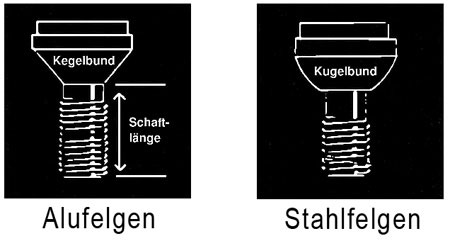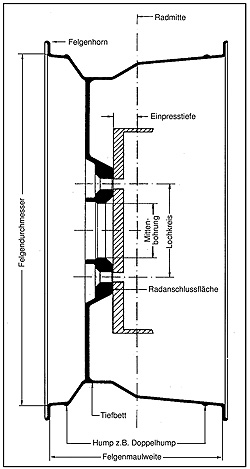Information about Rims
Our beginner's guide is intended to help you understand the meaning of the term "offset" and allow you to calculate the combinations of wheel rims and mudgard widths youself.
First of all some explanations:
Wheel mounting surface = drum brake or disc brake
Wheel center = is determined by placing one meter of measurement on the rim (from flange to flange of the wheel) and then you determine the center (see drawing).
Offset = corresponds to the distance between the center of the wheel and the wheel mounting surface.
If the mounting surface of the wheel is perfectly centered, you have a zero offset (Offset=0), while if the mounting surface is in front (more toward the street side) of the centerline of the wheel (e.g. Offset 25), you have a positive wheel offset. This means a narrowing of the vehicle track width of approx. 2.5 cm per side.
Whereas if the mounting surface is behind the wheel centerline, you have a negative Offset (e.g. Offset -10) and this means a widening of the vehicle track width of about 1.0 cm per side.
The width of the rim is always indicated in inches (") (1 inch = 2.54 cm), i.e.: a 7-inch rim has a width of 7 x 2.54 cm = 17.78, i.e. about 18 cm.
Let's see an example
If you compare a 5.5 J x 15 Offset+ 34 rim with another 7J x 15 Offset+16 one, the distance between the wheel mounting surface and the outer flange of the rim is calculated as follows:
5.5 J x 15 Offset 34 = (5.5 x 25.4*)/2 -(+34) = 36 (mm)
7 J x 15 Offset 16 = (7 x 25.4*)/2 - (+16) = 73 (mm)
* = 1 inch
So, if a 5.5 J X 15 Offset 34 rim fits just below a normal fender, a 73 mm - 36 mm = 37 mm (approx. 4 cm) mudguard extension is required for the 7J x 15 Offset +16 rim.


